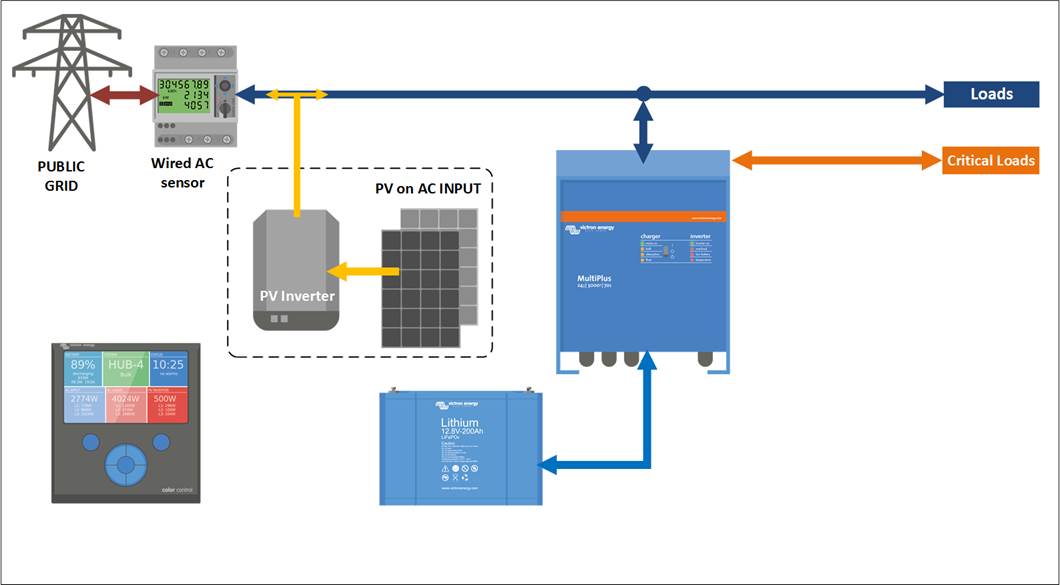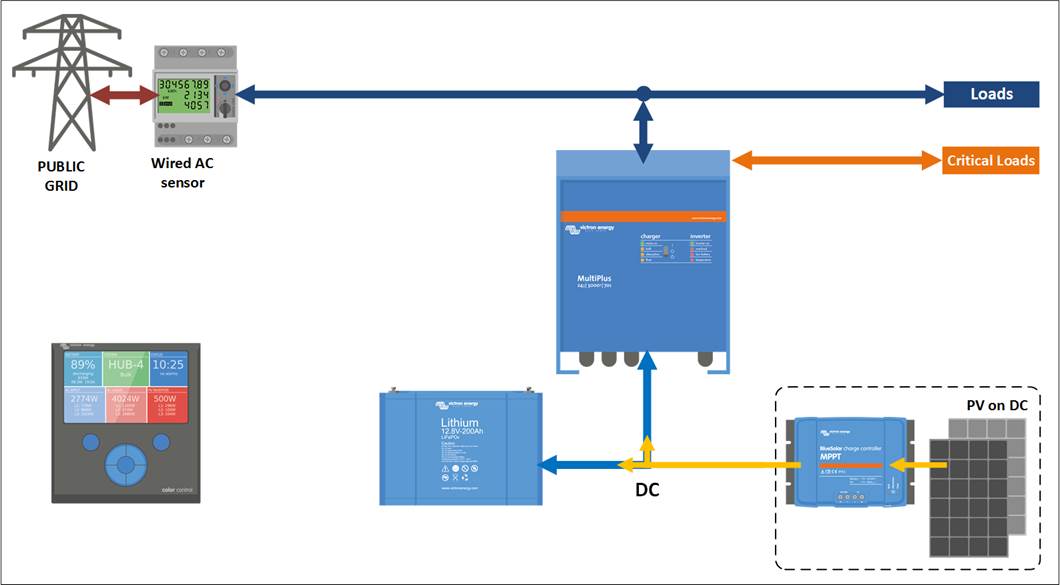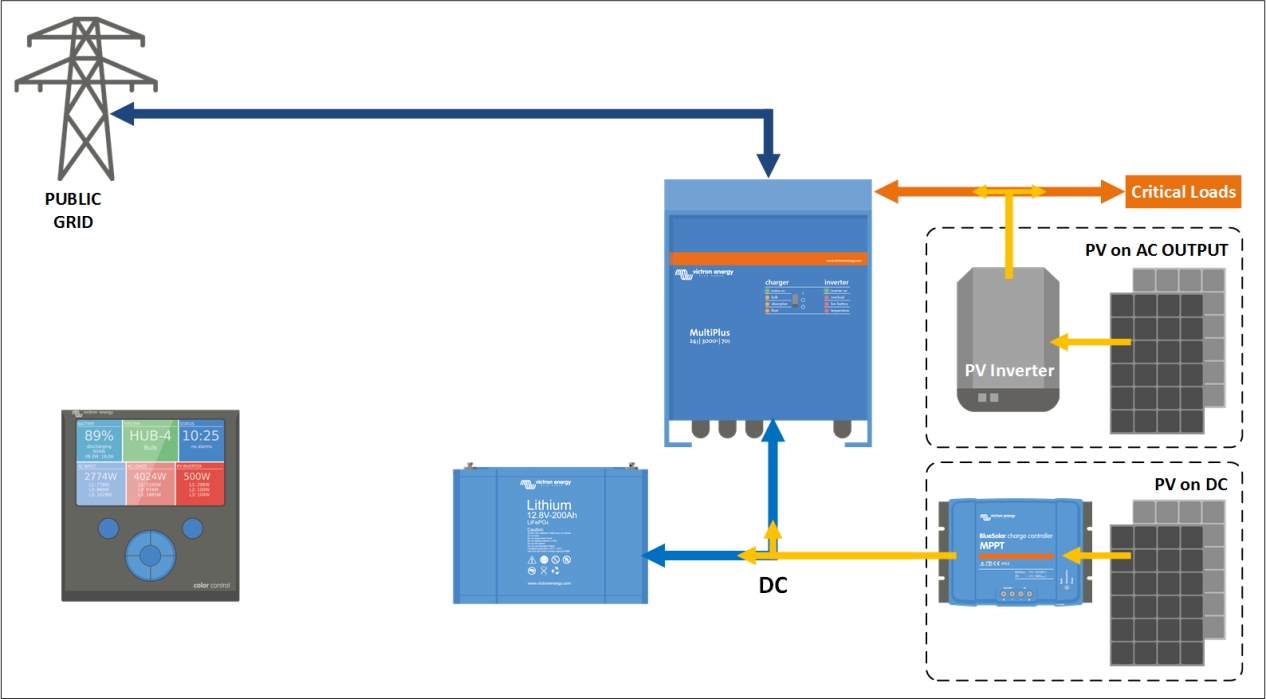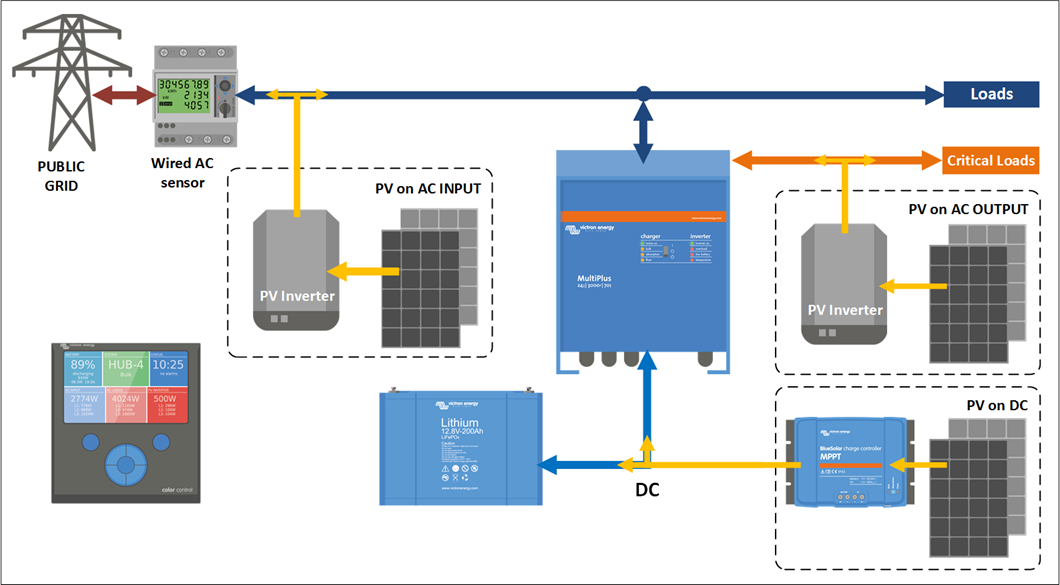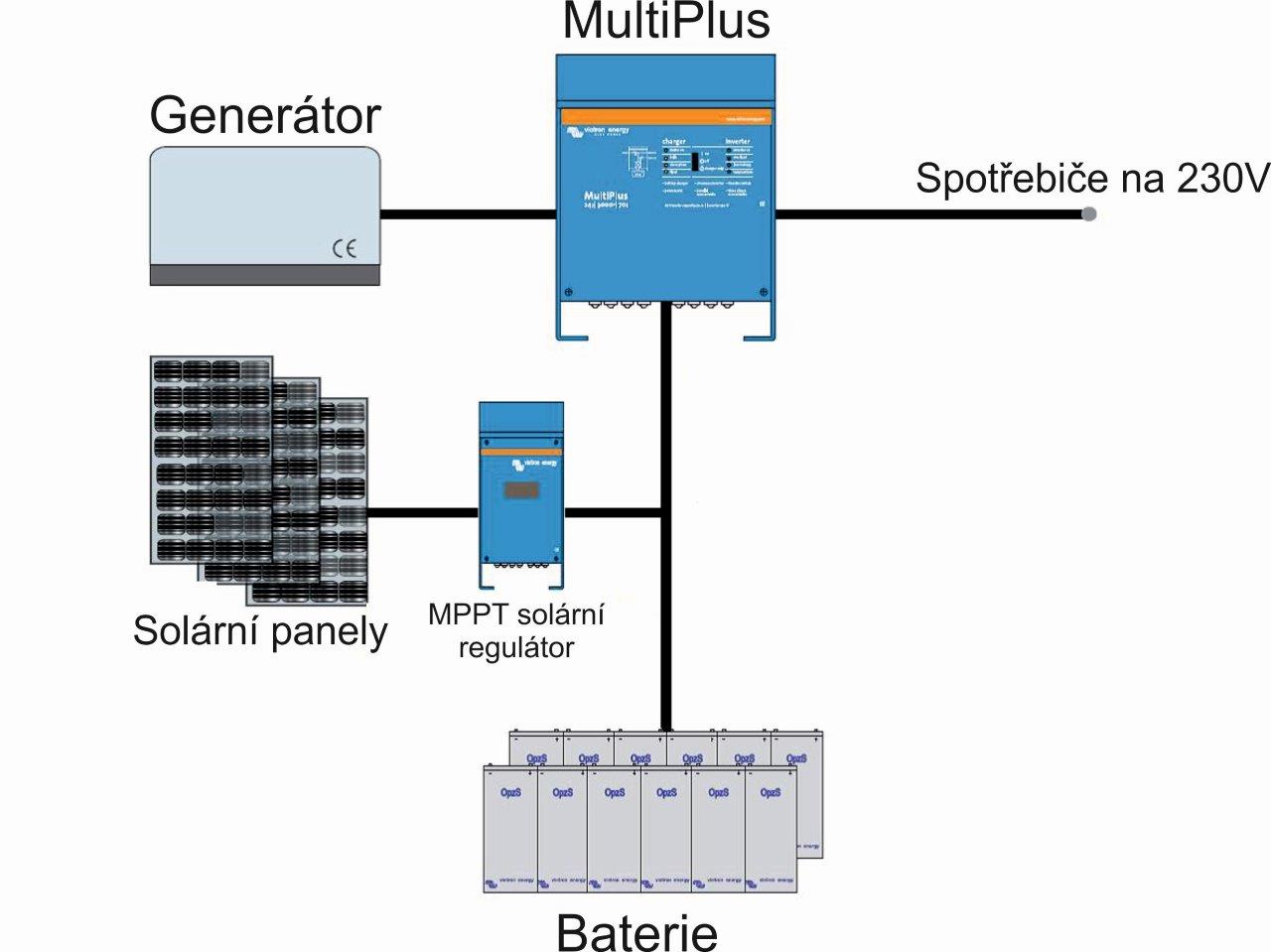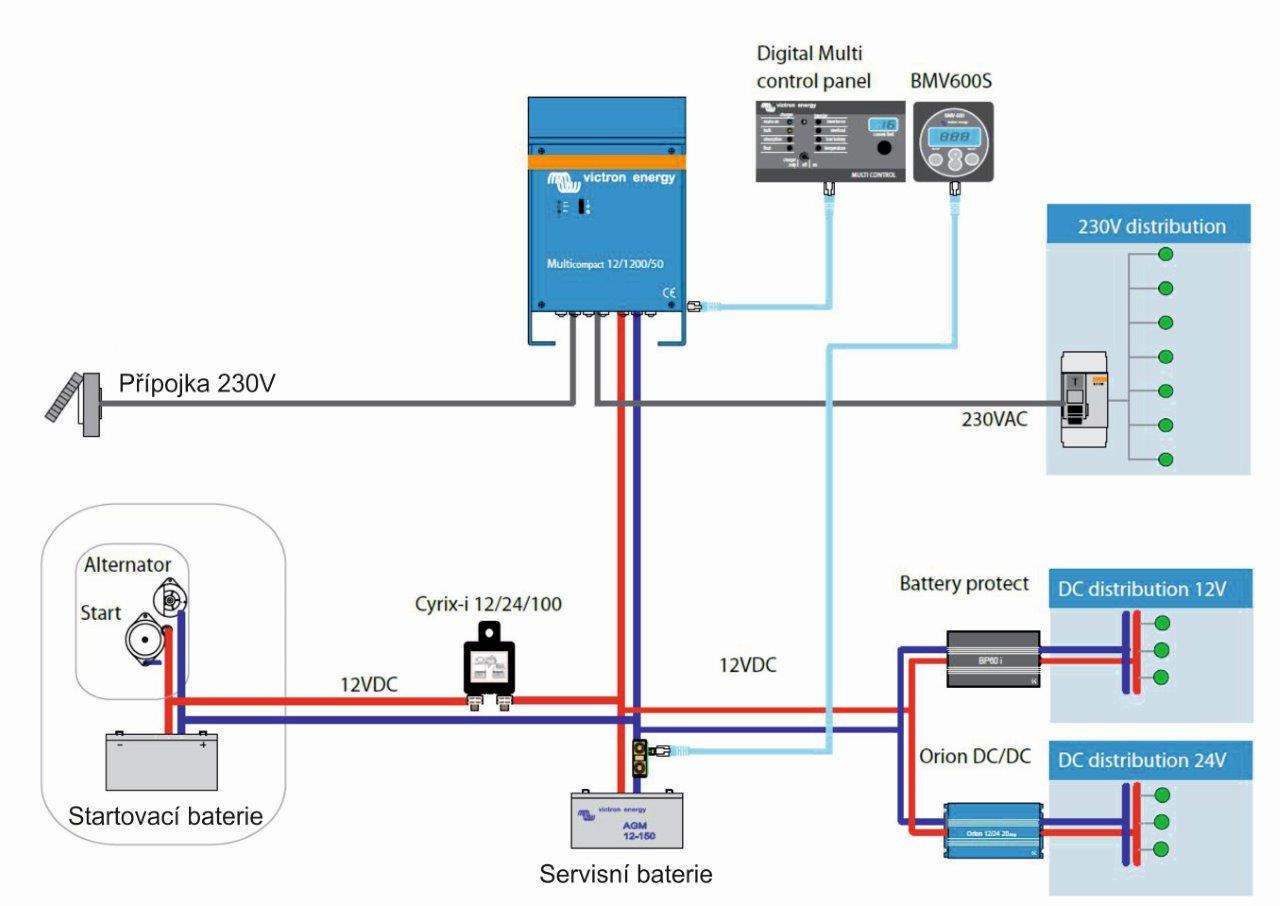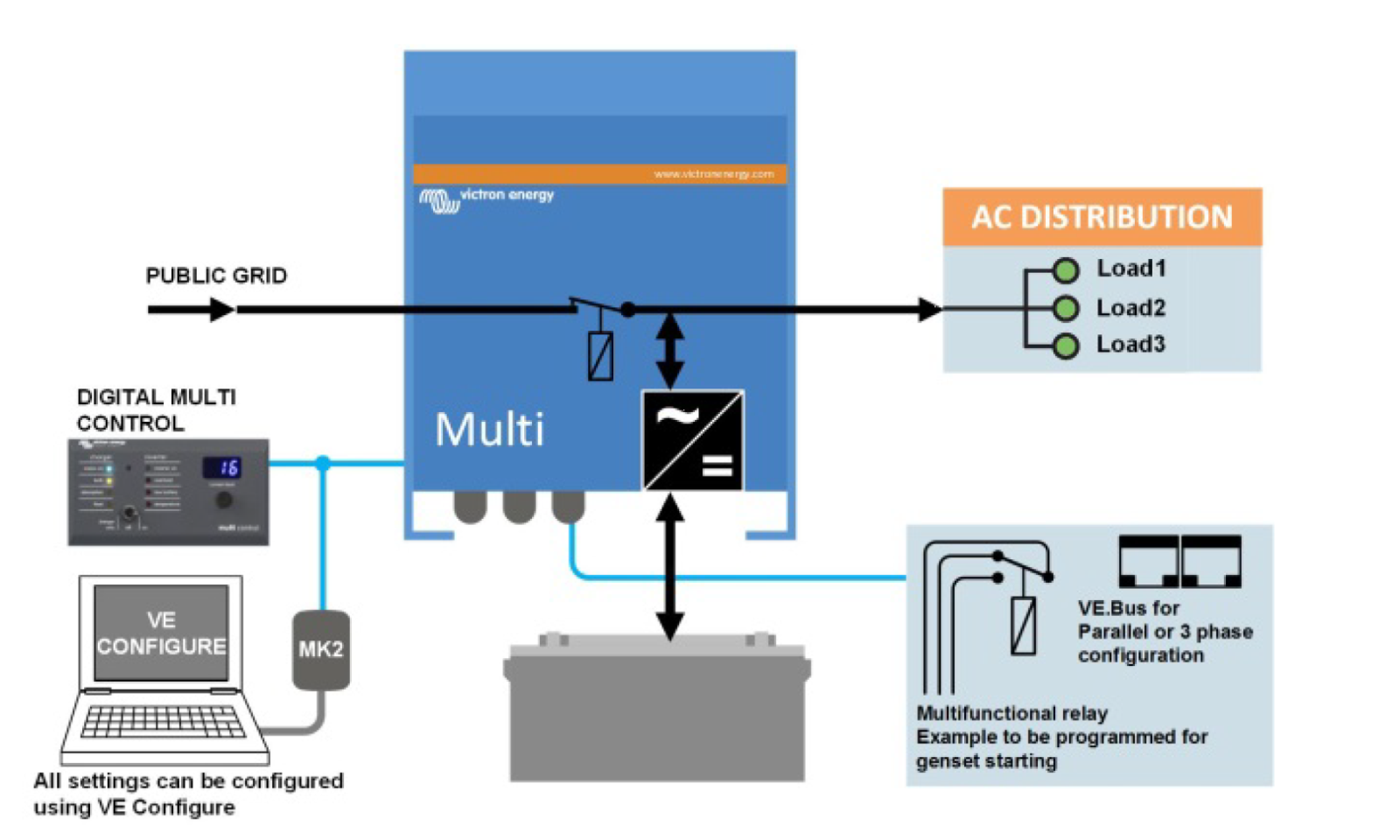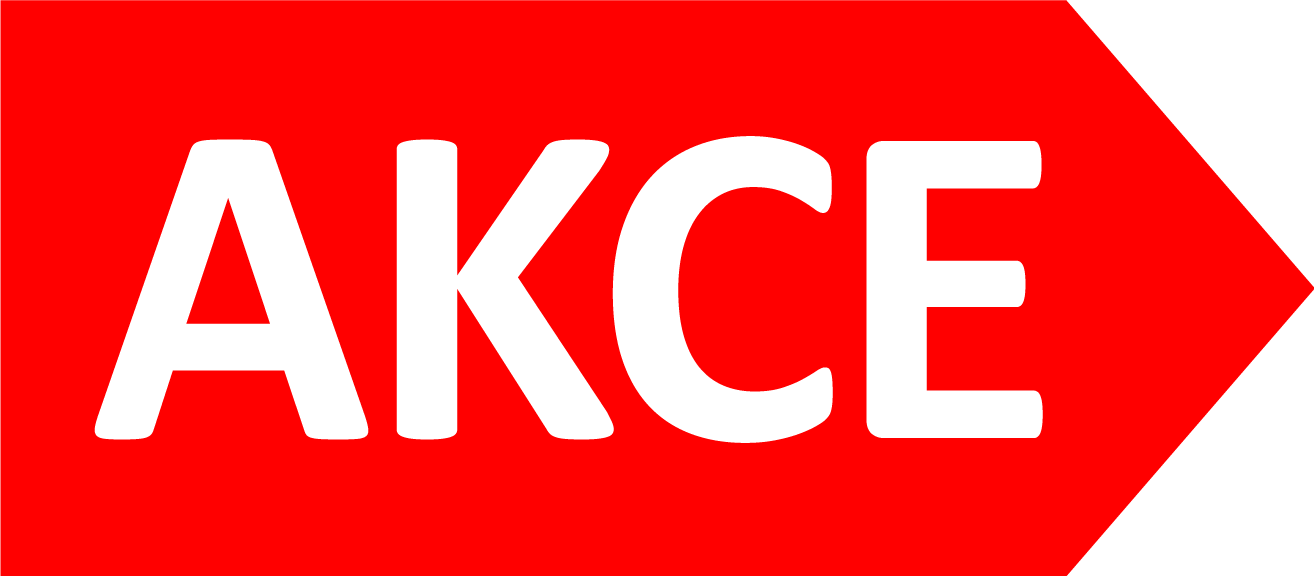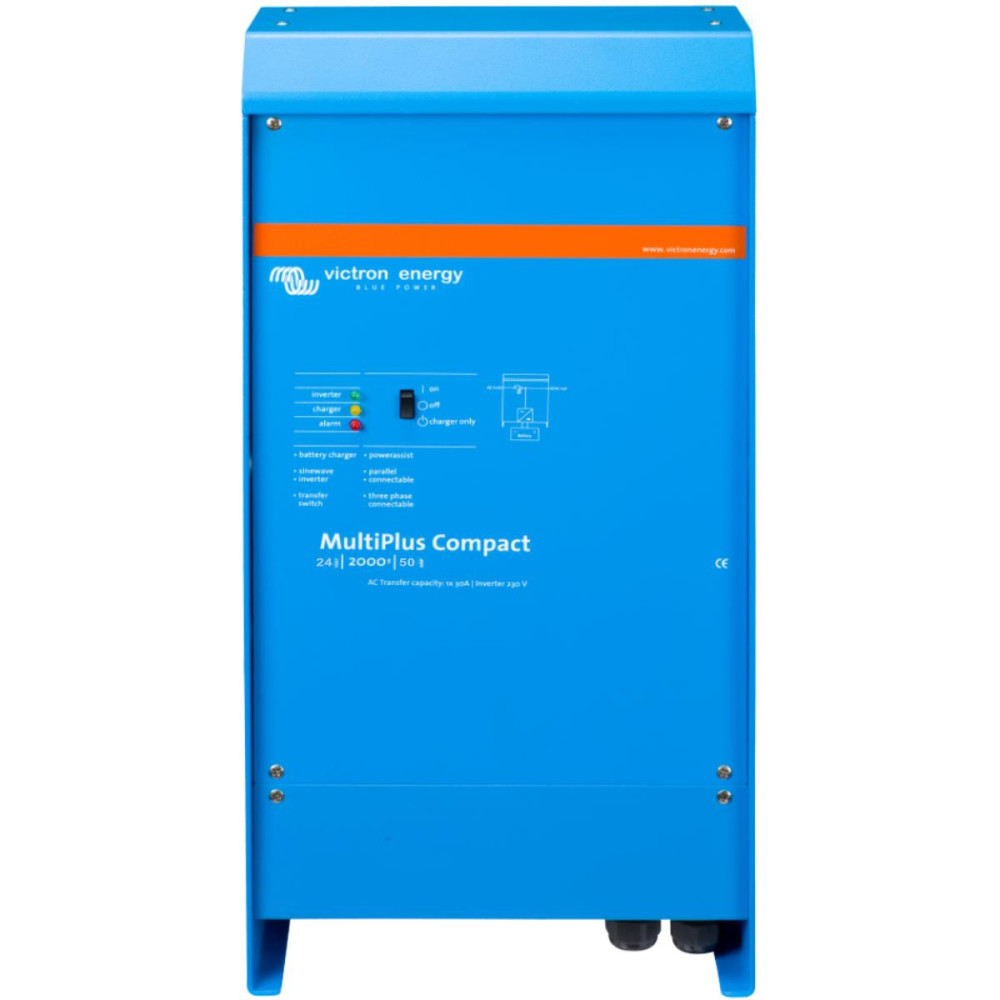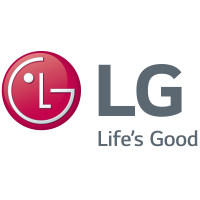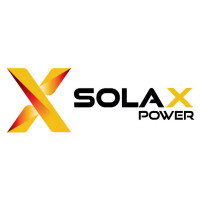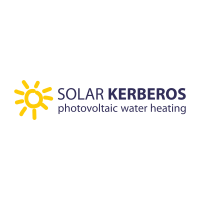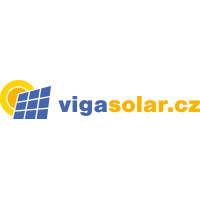MultiPlus , as the name suggests, is a combination of an inverter and charger in one elegant package. Its range of features includes a pure sine wave inverter, adaptive charging, PowerAssist technology and other features for integration into various types of systems.
One AC input
The MultiPlus is equipped with one AC input for connection to the distribution network or, for example, a generator.
If two AC inputs are required, then select the Quattro unit.
Two AC outputs
MultiPlus is equipped with two AC outputs. The main AC1 output ensures an uninterrupted power supply. For example, in UPS mode, the MultiPlus will take over power to connected appliances (in less than 20 milliseconds) in the event of a mains or generator failure.
The second output is only functional when the AC input (distribution network/generator) is available. Therefore, a load that would quickly drain the batteries, such as a water heater, can be connected to this output and will only be powered from the AC source (second output available on models rated 3kVA and above).
Four stages of charging with an adaptive charger and two outputs for battery charging
The main output provides powerful battery charging through an "adaptive charging" system. The software controls the three-stage automatic charging process to suit the condition of the battery and adds a fourth charging stage - maintenance charging. In addition to this, MultiPlus can charge a second battery using an independent charging output designed for, for example, generator starter batteries. Multiplus is designed to charge all types of lead acid, alkaline and lithium batteries.
Virtually unlimited power thanks to parallel operation
Up to 6 MultiPlus units can operate in parallel to achieve higher performance.
Three-phase operation
Three units of the same type can be configured for three-phase operation. But that's not all: up to 6 sets of three units can be connected in parallel to obtain up to 75 kW / 90 kVA inverter power and 2000A charging capacity.
Unique features of PowerAssist
MultiPlus prevents overloading of a power-limited AC source, e.g. a current-limited power connection. Should the AC input power source be overloaded, the charging current to the battery will be automatically reduced in the first place. Secondly, the output AC current is then boosted by the current drawn from the battery.
Solar energy
AC power can be available even in the event of a grid failure.
MuliPlus can be used in both off-grid (islanded) systems and grid-connected PV systems. The MultiPlus is not equipped with an input for the PV array, but is designed to work with MPPT controllers (DC coupling systems) or grid-tied inverters (AC coupling systems).
System configuration
- In the case of a stand-alone e.g. UPS installation, the setup can be easily done in a few minutes using the DIP switches.
- Parallel and three-phase applications can be configured using the VE.Bus Quick Configure software and the VE.Bus System Configurator software.
- Off-grid and hybrid PV installations for self-consumption, which include grid-tied inverters or MPPT solar chargers, can be configured using the Assistant (dedicated software for specific applications).
- The configuration software can be downloaded free of charge atby editing the link (VE.Configure 3):Âhttps://www.victronenergy.com/support-and-downloads/software For this software you will need a PC communication interface MK3-USB
Remote monitoring and system configuration
Monitor and control your system locally (LAN) or remotely over the Internet from anywhere in the world using the free VRM application and the free VRM portal.Â
https://vrm.victronenergy.com/landingpage
Access can be from a tele:phone, tablet, laptop or computer for different operating systems. There is no end to the control, using one of the following control panels you can monitor and configure the system from anywhere in the world.
Â
MultiPlus offers many variants of operation and we are able to offer solutions to a range of user requirements. Here we list the most common operating modes to give you an idea:
Â
The ESS solution - Energy Storage System
This mode is only for photovoltaic installations with an available distribution network (DS), the requirement to maximise the use of the solar energy produced in combination with a running DS and the possibility of storing excess energy in batteries.
 Â
A detailed manual for the ESS system can be found at the following link:Â https://www.victronenergy.com/live/ess:design-installation-manual
Examples of ESS system configuration:
Â
1. Classic power plant supplemented with energy storage
Â
As soon as the meter registers a supply to the distribution network (referred to as DS), the ESS system starts to scavenge the excess energy into the battery. As soon as the grid meter registers a purchase of energy from the distribution grid, the ESS system supplies energy from the battery to the grid. In the event of a DS failure, the PV is not running and the critical loads (in the Critical Loads scheme) are powered from the AC input of the MultiPlus/Quattro unit - this ensures that only the priority loads are discharging the battery and the non-priority loads are disconnected.
Â
2. The energy from the PV panels is processed by the MPPT solar controller.
Â
This arrangement is particularly suitable for smaller installations and has the advantage of efficiency - the DC energy from the PV is stored directly in the DC battery. Compared to the previous example, it achieves higher efficiency because there is no need to process the DC current to AC using a power converter and then convert it again from AC to DC for storage in the battery - this causes a loss of 20-30%. In the event of a DS (blackout) only critical consumers are again energized, but the PV system remains fully operational and operates in a completely islanded/autonomous mode.
Â
Â
3. Variant without a seed mixer. Again available in combination with both a power converter and an MPPT solar controller.
Â
Â
4. This is also how the ESS system can work and allows the combination of all three PV sources simultaneously.
Â
Â
Island OFF-GRID mode for sites without connection to a distribution networkie:
The MultiPlus/Quattro is connected to the battery and supplies power to the appliances via AC1 input. A generator can be connected to the AC input, which can also be started automatically on demand from the computer or manually. Once the generator starts, the unit supplies power to AC inputs 1 and 2 and simultaneously charges the batteries along with the solar panels. Once the generator shuts down, power is again supplied from the battery/solar panels. The unit has two inputs for gain - the first input is permanent, the second input only when the generator is running.
Â
Â
Mode for mobile applications - cars, military vehicles, ambulances
The MultiPlus unit takes care of the complex energy supply solution on board. As soon as it connects to the power outlet in the garage, the MultiPlus unit draws energy to power the appliances while simultaneously charging the battery. Once unplugged, power is supplied from the battery.
Â
Â
UPS mode
Very popular UPS mode. As soon as a distribution network failure occurs, MultiPlus immediately starts to power the backed-up appliances from the battery. Once the supply from the distribution network is restored, it switches back to power from the DS and automatically performs a full battery charge to prepare the system for the next eventuality. This is done quickly without interrupting power to the appliances.
Â
Â
Please refer to the attached datasheet for detailed technical parameters.
 Secure payments
Secure payments
 Product delivery
Product delivery
 Shipment insurance
Shipment insurance
